Installation of an external air conditioner unit in the attic: possible solution and analysis of technical specifics
A split system is extremely necessary for comfortable housing.Agree, there is simply no other way to withstand the heat of summer and the coolness of several weeks of the off-season. However, on many city facades the placement of splits is prohibited. So why not display the air conditioning unit in the attic where it is out of sight?
We examine the conditions that make it possible to place the external part of the split system in the attic or technical room of an apartment building. We will also consider the factors that reasonably impede this method of installing a two-unit climate control system.
The content of the article:
Possibility of placing the unit in a technical room
Non-residential premises of an apartment building that are not part of any apartment belong to all apartment owners of this apartment building at the same time. This is approved by the Housing Code in part one of Article 36.
This means that any attic, as well as technical premises of an apartment building are in the common shared ownership of the residents.
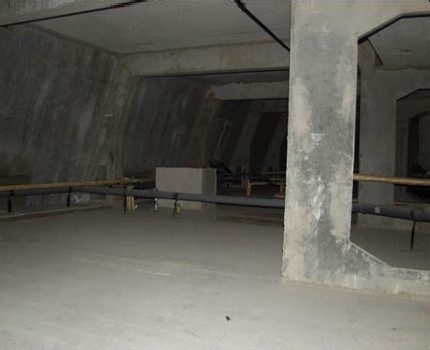
Article 161 of the Housing Code reflects the need to maintain favorable living conditions for all residents of a high-rise building.This premises, which is the common property of the apartment owners, must be maintained in proper condition both in terms of sanitary and epidemiological safety and fire safety.
According to the “Rules for the technical operation of housing stock” developed by the State Construction Committee No. 170 dated September 27, 2003, the management organization (hereinafter referred to as the MA) is obliged to ensure the temperature and humidity conditions of the attic (technical floor) that exclude the formation of condensation on the building envelope (clause 3.3.1).
Moreover, the temperature of a cold (unheated) technical room can exceed the temperature of the outside air by only 4°C (clause 3.3.2).
Access to the attic is permitted only to employees of the management company and personnel of operating companies whose equipment is located on the roof or in the attic (clause 3.3.5).
According to the above standards, they do not directly prohibit the installation of a split air conditioner element in the attic. If the MA does not provide reasonable objections and if 50% of the homeowners in a given apartment building do not oppose the placement of a compressor-evaporation unit (or units) on the technical floor, then such installation will be legal.
Features of installation in the attic
Most household climate control devices are designed to place the external module at a short distance from the room evaporator and literally outside, i.e. in a “street” atmosphere. And when installing the external unit of a split-system air conditioner in the attic, you will need to take into account a number of mandatory technical nuances.
Why is a multi-meter height difference between blocks dangerous?
Among the significant characteristics of each split system (in the technical passport) the greatest height and length of the freon line is given.The minimum parameters start from 5 (height) and 15 (length) meters. A longer and more distant vertical pipe line than indicated in the passport split systems, the compressor simply won’t pump.
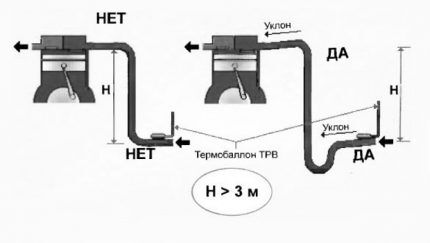
So is it possible to install an outdoor air conditioner module in the attic if there is more than 3 “vertical” meters between it and the indoor unit? You need to calculate the total length.
The ratio of the lengths of copper tubes connecting split modules vertically and horizontally is approximately determined as 1:3.
Those. with a horizontal distance from the indoor unit to the “outdoor” unit, for example, equal to 4 m, the vertical section of the line will remain less than 3.5 m. Note that this is the maximum height that the compressor can handle, which means it will have to work under a consistently high load and wear.
Another problem with the location of the split compressor module above the evaporator unit at an elevation of more than 3 m is the lack of oil in the “outdoor” unit - it accumulates in the pipes near the indoor module.
And since room temperatures are usually higher than in the area where the compressor unit is located, refrigerant vapors condense in the “compressor” sector of the freon line after the air conditioner stops. Oil at the bottom, refrigerant vapor at the top of the line - ideal conditions are created for water hammer the next time the split system is started.
How to reduce the risk of water hammer when there is a large difference in block levels?
To avoid the formation of an oil plug in the lower section of the refrigerant line, you need to install an oil lifting loop on the ascending (suction) pipe. It is U-shaped and no longer than eight pipe diameters.
For example, for a tube with a diameter of ¼ inch, the maximum length of the oil lift loop section should not exceed 50 mm. The loop is created at the bottom of the rising pipeline.
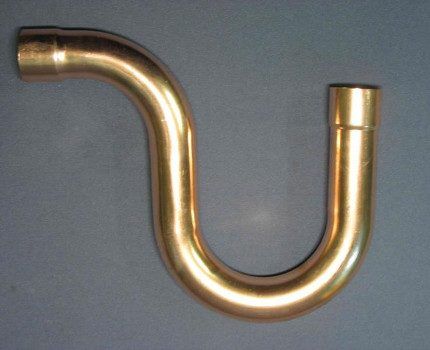
If the vertical section of copper tubes is more than 7.5 m long, then the refrigerant gas mixture at a speed of 5 m/s (usual speed in an air conditioning system) will not be able to maintain an oil film on the walls of the line.
Gravity will “pull” the oil down, filling the oil collection loop entirely and again threatening water hammer when the split system is turned on. Then you should install two loops at a distance of 3 meters from each other (one at the bottom, the second at the top of the suction tube).
Note that the intermediate oil lifting loop on the freon line, led to the attic or technical floor from the apartment through ventilation duct, will significantly block its cross-section and will prevent full hood. If pipelines are pulled into the attic through the standard ventilation channel from two split systems, then the air exchange in the apartment may stop altogether.
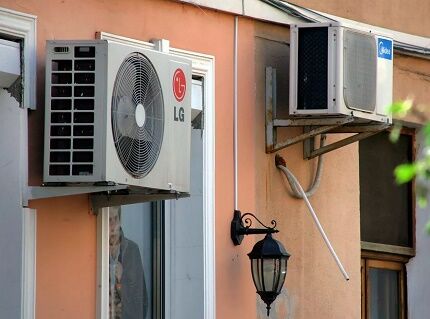
In addition to installing the oil collection loop, all horizontal sections of the pipes must be tilted in the direction of refrigerant flow. Those. the slope on the supply pipe to the compressor unit should be directed precisely towards this module, and on the outlet pipe - directed from it downwards towards the evaporator.
Compressor unit thermal emission problem
Essentially, in air cooling mode, the split system takes heat from the “indoor” unit, transfers it outside the apartment and throws it outside through the “outdoor” unit.
In order for the work to cool the room to occur at the user-specified intensity (set temperature mode), the air mass in the sector for discharging excess heat must meet certain parameters.
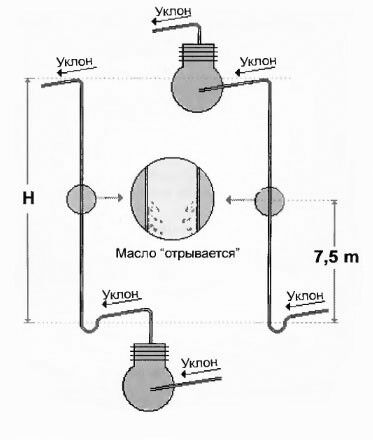
The condenser built into the external split module will work normally if at the location of the device there is more than 17 cubic meters of air atmosphere per kilowatt of its thermal power. For example, the condenser of a “nine” split system with a power in heating mode of 2.8 kW (indicated in the passport) needs at least 48 m3 air per hour to relieve heat.
Considering that the height of the technical room in an apartment building does not exceed 1.6 m (sometimes it is only 1.2 m), then one “street” “nine” block installed in the technical room will require 30 m2 area. If the attic is no higher than 1.2 m, then 40 m will be needed2 its area.
If the air change in the attic is not effective enough, its atmosphere will warm up to more than 40OS, because of what compressor block will overheat.Then the overheating protection will work, which will turn off the split system and will not allow it to be turned on until the module with the compressor has cooled.
Therefore, in the hot summer, and with several split-system modules actively working on the technical floor, their protection will operate hourly. As a result, maintaining an acceptable microclimate in residential premises will be quite a difficult task.
How to avoid overheating of a split unit on the technical floor?
Attic ventilation vents and dormer windows are designed for natural air exchange. Air enters the technical floor from the living quarters below, through ventilation openings and gaps at the overhang of the roof structure.
Slot vents and technical ventilation openings are not capable of ensuring sufficient changeability of the air mass in the attic with several actively operating compressor units of air conditioners.

This requires forced air supply, however, equipping the technical floor with electromechanical ventilation units is not always effective and is definitely not cheap. There is a better solution - equipping the attic with a low-pressure ejector, which can speed up the ventilation process many times without wasting electricity.
For example, an EI-1 type ejector from the Tula enterprise Promventilatsiya-Service provides a changeover of 1000 cubic meters of air per hour.
Those. Such an ejector is effective for ventilation of a technical floor with 15-17 external units of “nines” split systems simultaneously working for cooling. Note that the ejector structure is quite long - type EI-1 has a length of 2.75 m.
Optimal split with the unit placed in the attic
Several living areas of the apartment will need conditioned air in both cooling and heating modes. However, it will be difficult to equip it with several two-block air conditioners with external modules moving into the attic, even if the apartment is on the top floor (i.e. located directly under the attic).
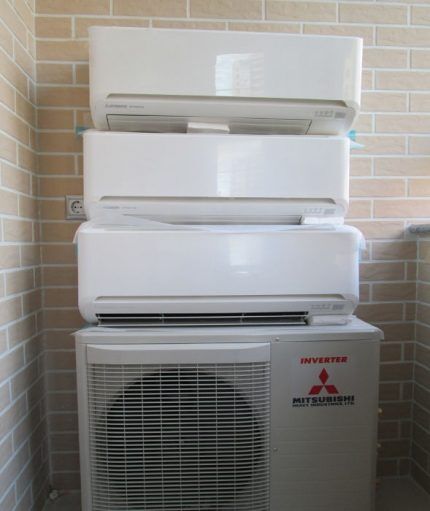
It's simple: paired pipelines of several split systems will completely block the exhaust air duct. To prevent this from happening, you will have to drill out the ceiling slab for each pair of pipes or prepare one common hole.
Perhaps an effective option would be to equip residential premises with an air conditioning system with one external and several indoor units – multisplit system. Although you will still have to pull several independent freon lines vertically upward, it will still be easier to cool a single compressor module.
You will need a fairly powerful multisplit of a well-known brand, capable of operating with a large difference in height between the modules and pumping a pipeline more than 50 meters long (taking into account the vertical:horizontal ratio as 1:3).
Considering the low intensity of natural ventilation on the technical floor, it is better to use a split-compressor unit with a centrifugal fan, which cools the compressor more efficiently than an axial ventilation unit.
You should not install an “outdoor” split module with pipes in the ventilation into the attic from apartments located on the penultimate level of a high-rise building or below, since the air exchange in residential premises will definitely worsen.
Conclusions and useful video on the topic
How to fix the problem with the air conditioner overheating in the technical floor:
How an oil lifting loop is built into the split system pipeline:
Among the technical tasks of installing a split air conditioner on a technical floor, the problem of condensate drainage is the simplest - the drain pipe is led at an angle into the pipe of the fan riser. As for the operating features of the “attic” compressor unit, there will be difficulties with washing it, since traditional pressure washing is not applicable here.
Perhaps a better option would be to place the outdoor split system module on the roof of the building. This will avoid difficulties with both overheating of the air conditioner due to insufficient air exchange, and with its periodic cleaning.
Would you like to share your personal experience in placing an external split unit in the attic? Do you have useful information on the topic of the article? Please write comments in the feedback sector below, post photos related to the topic of the article, and ask questions.



